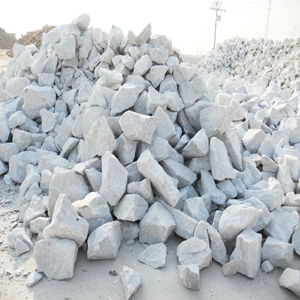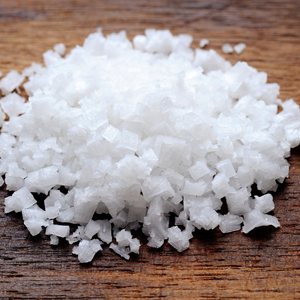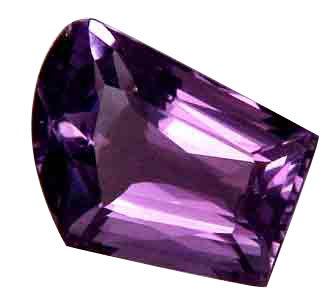Mercury Mining
MERCURY :
Mercury deposits are small and irregular, occurring sporadically as scattered deposits and often as veinlets. This precludes large-scale, highly automated mining methods. The most common method of ore recovery is underground mining, involving traditional drilling and blasting followed by scraping or mechanical loading into ore cars.
Due to the fact that most mined cinnabar contains less than 1 percent mercury, various mineral processing techniques such as jigging, shaking, screening, elutriation, and flotation have been employed to assess the ore.
Conventional flotation separation methods for sulfide ores have seen some success in the United States. However, due to cinnabar's soft and friable nature, crushing and grinding the ore to reduce it to a size small enough for mineral liberation may result in significant losses as fine particles are lost in the flotation process. While various methods are effective in producing higher-grade concentrates of cinnabar for roasting, they cannot compete economically with direct roasting of the ore either as mined or following initial hand sorting.
HOW IS MERCURY OBTAINED?
Mercury is derived from its primary ore mineral, cinnabar, which is essentially a soft, reddish-brown mercury sulfide. This mineral is widely distributed and typically occurs in various types of rocks, often in association with gold, iron, and zinc. Additionally, there are 25 other minerals from which mercury can be extracted. Highly mechanized mining techniques are employed for extracting mercury-containing ores.The process of hydrometallurgy can be utilized to obtain the metal, involving leaching the ores and treating the concentrate with solutions of sodium hydroxide and sodium sulfide. The metal can be precipitated with aluminum or through the electrolysis process. However, the pyrometallurgy method is generally preferred for producing pure mercury, as leaching is more costly when compared to ores of improper composition.
EXTRACTION AND DISTILLATION -PYROMETALLURGY :
The pyrometallurgical extraction of mercury from its ore is essentially a purification process. When high temperature is applied to the sulfide ore in the presence of air, oxygen combines with the sulfur to form sulfur dioxide, and the metal is vaporized at a temperature above its boiling point. The gases are then passed through a series of U-shaped pipes to condense the mercury vapor into the liquid phase.
Various vertical furnaces have been utilized to extract mercury since the most primitive known crude furnaces were used at the Almadén Mine in Spain in the 12th century. The most widespread furnace used in Europe is the Cermak-Spirek shaft furnace, which can handle either coarse feed (at least 4 centimeters, or 1.5 inches) or (with modification) finer material. The furnace can also accommodate different grades of ore. The ore is mixed with charcoal or coke fuel and raised to the top of the furnace. Combustion of fuel by a blast of hot air at the bottom produces hot gases, which pass upward through the descending ore and vaporize the liberated mercury.
Retorts are employed for mercury extraction in small-scale mining operations or to vaporize impurities collected in the condensing tubes of large furnaces. Retorts are inexpensive to set up, but they are more costly to operate than furnaces because the material in such batch processes must be physically agitated and removed.
MERCURY TYPES :
Mercury is usually found in three different forms: elemental, inorganic, and organic.
Elemental Mercury a silver-white metal, remains liquid at room temperature and is commonly utilized in thermometers, barometers, and various scientific instruments.
Inorganic Mercury exists typically in compounds like mercuric sulfide and mercuric chloride. These compounds play roles in industrial processes and may be present in certain paints.
Organic Mercury represents a form of mercury occurring naturally in the environment. It is often generated through natural processes like the decomposition of specific minerals or through coal combustion in power plants. Additionally, organic mercury can accumulate in fish, emphasizing the importance of restricting fish consumption for certain populations.
MERCURY MINING METHODS :
Mercury has been extensively utilized in gold mining since the era of the Roman Empire. Even in modern times, mercury continues to be employed in artisanal and small-scale gold mining. This method involves extracting the ore from the ground and subsequently crushing it into a fine powder. The powder is then heated to release the mercury, which is captured and condensed in a retort. Subsequently, the gold is mixed with the mercury, resulting in the formation of a gold-mercury amalgam. This amalgam is heated again to separate the gold from the mercury. The gold is then melted and poured into molds to create gold bars. The remaining mercury is recycled back into the system and can be reused.
MERCURY MINING REFINING :
Mercury mining and refining entail extracting mercury from the earth and refining it into usable products. Given mercury's high toxicity, governments worldwide carefully regulate its mining and refining processes. This complex procedure involves various steps such as digging, crushing, grinding, and chemical processing. Open pit mining is the most common method for mercury extraction, entailing digging a large pit and extracting the ore. Once extracted, the ore is crushed and ground into a fine powder, then heated in a furnace to separate the mercury. Further refinement occurs through distillation, where the heated mercury vapor is collected and cooled to separate it from impurities. Purified mercury finds use in diverse applications, including thermometers, fluorescent light bulbs, and batteries.
TOP MERCURY PRODUCING COUNTRIES :
USES OF MERCURY :
-
It is used in making alloys along with iron and steel for producing bottles and flasks for trading purposes.
It plays a significant role in electricity; hence, it is utilized in manufacturing electrical components and is also cast as a moving cathode in many electrolysis processes.
Due to its excellent conductivity, it is employed in making switches, fluorescent bulbs, oscillators, and power control switches.
Mercury batteries boast long life spans and provide uninterrupted service, regardless of continuous operation.
Mercury's property of expanding and contracting with temperature makes it a chief component in thermometers used for checking body temperatures.
Mercury vapor lamps are utilized in streetlights, photography, heat therapies, and motion picture projections.
Amalgams of mercury, along with silver and tin, are employed in repairing dental cavities.
Various mercury compounds find applications in pharmacology, chemical industries, and agriculture.
ANNUAL MERCURY USAGE :
Mercury, identified by the symbol Hg and atomic number 80, is a metallic element widely employed across various industries. Its applications span from thermometers and barometers to electrical switches and fluorescent lamps. Additionally, mercury plays a pivotal role in the production of chlorine, caustic soda, batteries, and the extraction of gold and silver.
Annual mercury usage varies across industries, but it's estimated that approximately 3,000 tonnes of mercury are emitted into the atmosphere each year. Primarily stemming from industrial activities, mercury emissions also originate from coal combustion, waste incineration, and natural phenomena like volcanic eruptions.
To mitigate mercury pollution, numerous countries have enacted regulations aimed at restricting its usage and emissions. In the United States, for instance, the Clean Air Act mandates that companies employ the most advanced technology to minimize mercury emissions from power plants. Furthermore, the US has prohibited the utilization of elemental mercury in thermometers, dental amalgam, and over-the-counter drugs.
Collectively, the annual consumption of mercury is declining due to heightened regulation and awareness regarding its hazards. Nevertheless, ongoing monitoring of its usage and emissions remains crucial to safeguarding human health and the environment.
MERCURY PRODUCTION IN THE WORLD :
Mercury, primarily a liquid utilized for various purposes, is obtained from its sole ore, cinnabar, through intricate processes of heating and condensation, as previously described. The occurrence of mercury in its native state is predominantly rare, occasionally found in association with silver. The Almadén mine in Spain stands as the global producer of mercury, renowned for its exceptionally high-quality output. Other notable producing regions include Yugoslavia, the United States, and Italy, with small quantities also known to be found in Arkansas and Texas. The top five countries renowned for mercury production, including China, Peru, are as follows:
|
||
Related Mining






















